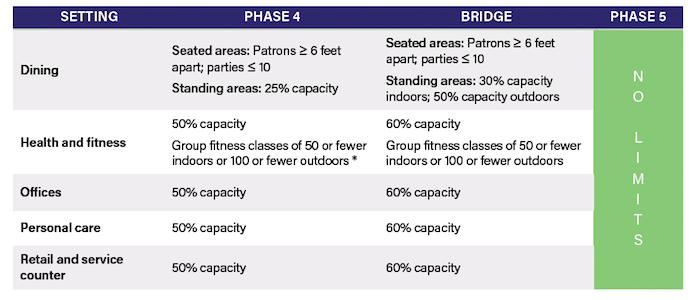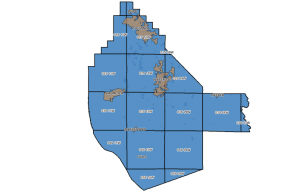Vaccine clinic Monday; Monroe County reports 102nd COVID death

Monroe County held another vaccine clinic to inoculate residents against the novel coronavirus.
On Monday from 1:30-4:30 p.m. at the Monroe County Fairgrounds, any county resident ages 18 and older could get the first dose of the Moderna vaccine. This marked the first time the county has opened its clinics up to this much of the general population. Registration was required for the clinic, but all spots filled up by late Saturday afternoon.
The county also recorded its 102nd death from the novel coronavirus Saturday when Monroe County Health Department Administrator John Wagner reported the death of a woman in her 60s who was not affiliated with a long-term care facility.
This comes after Wagner reported the death Thursday of a 62-year-old male who tested positive for the virus in August and died March 18. He lived in a long-term care facility.
“(This is) another case of ‘are these numbers of people who had COVID in the past and have now passed away or is COVID the cause of death,'” Wagner said of that death.
That news comes as vaccine eligibility in Illinois is expanding aftter Gov. JB Pritzker said last week that anyone ages 16 and up in the state will be eligible for the vaccine starting April 12.
On March 22, those in higher education, government workers and members of the media were eligible for the vaccine. On March 29, restaurant staff, construction trade workers and religious leaders can get the shot.
While that may sound good, and it is, Monroe County Health Department Administrator John Wagner said it would have little effect on vaccinations here.
“It won’t affect us at all if we’re still only getting 600 doses a week,” he said. “It will be opened up to everybody, but we’ll have only one clinic a week. Until they start sending us more vaccinations, it doesn’t change the clinics.”
In short, while more people will become eligible, the supply is still so limited that it is unlikely large numbers of those groups will get the shot soon.
Still, the county continued its work to vaccinate residents with a clinic Friday that ended early because supply ran out.
“It went good,” Wagner said. “Later on in the evening, we had people continue coming in. Hopefully it will stay that way.”
In addition to the weekly vaccine clinics in Monroe County, all Illinois residents who are eligible can get vaccinations at the Belle-Clair Fairgrounds in Belleville. For more information on that mass vaccination site, click here.
The Columbia and Waterloo Walgreens locations also offer COVID vaccines. Click here to sign up.
The IDPH reports Monroe County has administered 16,962 doses of COVID vaccine. There are 6,473 people fully vaccinated here – meaning 18.85 percent of the county has received both shots.
Illinois overall has administered 5,664,426 doses of the vaccine and received over 7 million doses. A total of 2,110,089 residents have gotten both shots, which means 16.56 percent of Illinois is fully vaccinated.
Also on the local pandemic front, Regional Superintendent of Schools Kelton Davis filed a declaration of authority last week essentially reaffirming that the health department has authority over the county’s schools when it comes to outbreaks and managing the pandemic.
Wagner said that declaration has no practical impact on his office’s activities.
“That’s all been in state law and everything. It’s basically just a document that reiterates or calls to attention what existing laws are,” he said.
Monroe County has now had a total of 4,230 cases of COVID-19 since the pandemic began, about 65 of which are active. Three residents remain hospitalized with the virus.
Overall, the Waterloo zip code has had 2,148 cases (25,300 tests performed), the Columbia zip code has had 1,616 cases (10,733 tests) and the Valmeyer zip code has had 163 cases (969 tests), according to the IDPH.
Monroe County’s seven-day rolling average test positivity rate was 6.5 percent on March 27.
The seven-day rolling average positivity rate for the metro east was 3.3 percent on March 27. The region has 28 percent of its ICU staffed beds available.
In St. Clair County, there have been 29,316 total positive tests and 469 coronavirus-related deaths. A total of 312,216 tests have been performed there.
Randolph County has had 4,055 confirmed cases, 18 of which are active. Eighty-four people have died from the virus there.
Illinois overall is up to 1,241,993 cases of coronavirus and 21,273 deaths.
There are 1,396 people hospitalized with COVID-19 in Illinois, including 308 people in ICU beds and 121 on ventilators.
Missouri has recorded 488,967 confirmed cases and 8,495 deaths. That includes 76,619 cases in St. Louis County and 19,847 cases in St. Louis City, according to the Missouri Department of Health & Senior Services.
Nationally, more than 30.3 million people have contracted the virus, while at least 550,030 people have died.
Worldwide, there are over 127.7 million cases of coronavirus and over 2.7 million COVID-19-related deaths.
State updates reopening plan
Pritzker announced an updated version of his Restore Illinois reopening plan that should get the state closer to pre-pandemic life sooner while not going as far as some Republican leaders want.
“COVID-19 has not gone away, but the light we can see at the end of the tunnel is getting brighter and brighter as more people get vaccinated,” Pritzker said. “It’s time to begin to cautiously move toward normalcy, and it’s imperative that we do so in a way that maintains all the progress we’ve made to date.”
All of Illinois is currently in Phase 4 of Restore Illinois, with Phase 5 representing a full return to normalcy.
Under the original plan, the state can only reach Phase 5 if “a vaccine is developed to prevent additional spread of COVID-19, a treatment option is readily available that ensures health care capacity is no longer a concern or there are no new cases over a sustained period.”
Pritzker’s updated plan establishes a “bridge phase” between where the state currently is in terms of restrictions and Phase 5.
“We want and need to move forward, but we must be measured and cautious in the approach,” Illinois Department of Public Health Director Dr. Ngozi Ezike said. “Rather than flipping a switch and saying we’re now in Phase 5, we’re looking at it more like a dial – dialing back some of the capacity restrictions that helped reduce transmission, and ultimately the number of new cases, hospitalizations and deaths. We don’t want to move too quickly and risk a significant reversal of our progress.”
The bridge phase allows for higher capacity limits at spectator events and has fewer limitations on businesses.
That includes permitting 30 percent indoor dining capacity and 50 percent outdoor dining capacity, 30 people per 1,000 square feet at outdoor events like county fairs, up to 250 people at indoor social events, 60 percent capacity at spectator events and 60 percent capacity at retail, health and fitness and personal care businesses.
The updated plan also stipulates that those who have been fully vaccinated against the virus or have a negative test one to three days before an event or outing are not included in the count when calculating capacity limits.
To advance to this phase, the entire state must reach a 70 percent first dose vaccination rate for residents ages 65 and over, maintain a 20 percent or lower ICU bed availability rate and hold steady on COVID-19 and COVID-like illness hospital admissions, mortality rate and case rate metrics over a 28-day period.
To then move from the bridge phase to Phase 5, the state must reach a 50 percent vaccination rate for residents ages 16 and over and meet the same metrics and rates required to enter the transition phase, over an additional 28-day period.
If the state experiences an increasing trend in COVID-19 and COVID-like illness hospital admissions, a decrease in ICU bed availability, an increase in the mortality rate and an increasing case rate over 10 days, it can move back a phase.
“With projections from the Biden Administration indicating that weekly vaccine deliveries to Illinois will surpass one million doses in April, it is fully in our power to turn the page on this dark and devastating chapter even as we race a tough clock: the new variants,” Pritzker said.
This revision is a step toward what local Republican lawmakers have been calling for in recent weeks, as they have said the state should move fully into Phase 5.
“While I’m happy that the administration is finally heeding our calls to allow Illinois to move closer toward reopening, I continue to be disappointed with the way the governor is handling this process,” state Sen. Terri Bryant (R-Murphysboro) said. “I have urged the governor to bring lawmakers to the table to work together to establish transparent and clear guidelines for allowing Illinois to fully reopen in a safe and efficient manner. He has ignored our calls for cooperation and refuses to release his unilateral grip on the future of this state.
“So it comes as no surprise that the governor is once again walking back on his plan to reopen Illinois. While this newly created ‘bridge’ gives a glimmer of hope, it’s certainly not enough.”
State Rep. David Friess (R-Red Bud) has also written an op-ed arguing the state should move into the final phase of the Restore Illinois plan and that the government should be more transparent about reopening plans, a point Bryant has also emphasized.
“Everyone may be tested at their local health department or hospital, the health departments have contact tracing in place, the medical community has learned how to treat positive cases over the last year and we are currently administering a vaccine from three different manufacturers,” Friess wrote. “The governor shut the state down over a year ago, we have a right to know if we have met the Phase 5 requirements and, if not, what is being asked of us before we can fully reopen.”






